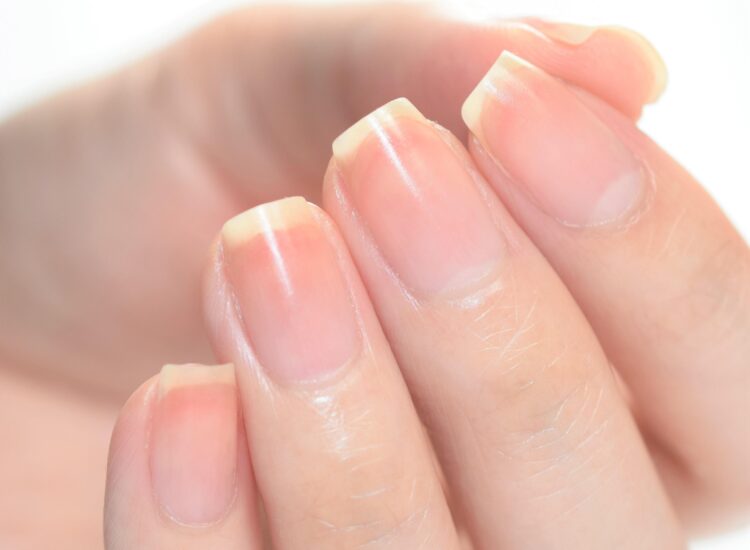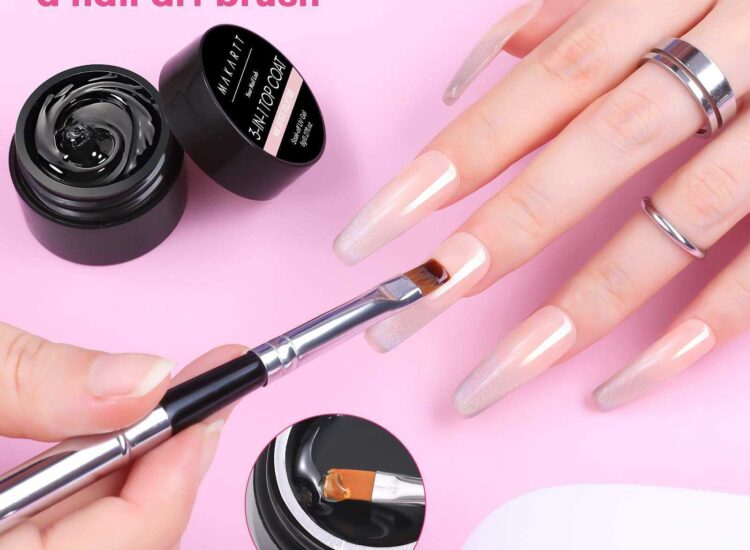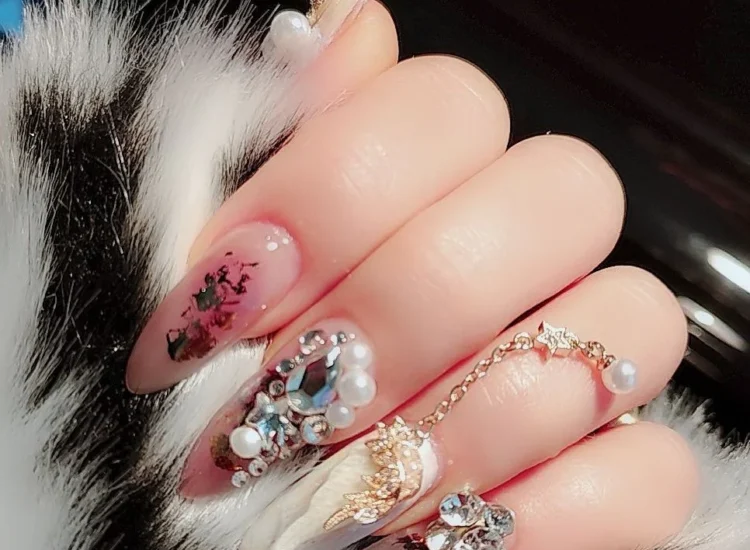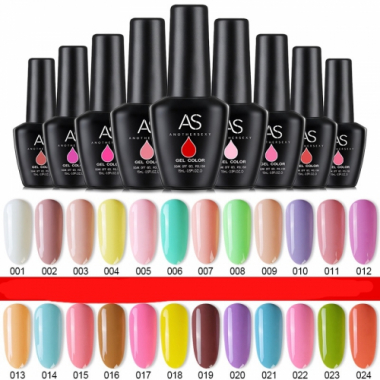From Dreams to Drills: Navigating the Journey of Opening a Nail Salon
Opening a nail salon, a sanctuary of beauty and self-care, is a dream for many aspiring entrepreneurs. It’s a venture that blends creativity, business acumen, and a passion for making people feel pampered and polished. However, turning this dream into a thriving reality requires more than just passion; it demands meticulous planning, strategic execution, and a healthy dose of resilience to navigate the inevitable challenges that come with launching a small business.

This article delves into the experiences and insights gained from those who have successfully navigated the journey of opening a nail salon. It’s a guide gleaned from real-world lessons, offering advice and practical tips to aspiring salon owners, covering everything from initial concept to grand opening and beyond. It’s a journey filled with excitement, hard work, and valuable learning experiences that can pave the way for a flourishing and fulfilling business.
Phase 1: Laying the Foundation – Planning and Preparation

The success of any nail salon hinges on a solid foundation, and this foundation is built during the crucial planning and preparation phase. This stage is not about rushing into opening; it’s about meticulous groundwork that will set the stage for long-term viability.
-
Market Research and Defining Your Niche: Before anything else, thorough market research is paramount. Understand your local market:
- Competitor Analysis: Identify existing nail salons in your area. Analyze their services, pricing, target audience, ambiance, and strengths and weaknesses. What are they doing well? Where are the gaps you can fill?
- Target Audience Definition: Who is your ideal client? Students, working professionals, retirees, luxury clientele? Defining your target audience will shape your service menu, pricing, marketing strategy, and salon décor.
- Demand Assessment: Is there sufficient demand for another nail salon in your chosen location? Consider population density, demographics, and existing salon saturation. Are there underserved niches you can cater to, such as organic or specialized nail art services?
-
Developing a Comprehensive Business Plan: A well-structured business plan is your roadmap to success. It’s not just for securing funding; it’s a vital tool for guiding your decisions and ensuring you’re on track. Key components include:
- Executive Summary: A concise overview of your business concept, mission, and goals.
- Company Description: Details about your salon’s name, location, services, target market, and unique selling proposition (USP). What makes your salon different?
- Market Analysis: In-depth analysis of your target market, competition, and industry trends.
- Services Menu and Pricing: Detailed list of services offered (manicures, pedicures, nail enhancements, waxing, etc.) and your pricing strategy. Research competitor pricing and consider value-based pricing.
- Marketing and Sales Strategy: How will you attract and retain clients? Outline your marketing plan (social media, local advertising, promotions, loyalty programs).
- Management and Operations Plan: Details on salon management, staffing structure, daily operations, appointment scheduling, inventory management, and customer service protocols.
- Financial Projections: Startup costs (rent, renovations, equipment, inventory, licenses), operating expenses (rent, utilities, salaries, supplies, marketing), revenue projections, profit and loss statements, and cash flow forecasts. Be realistic and conservative in your financial projections.
- Funding Request (if seeking external financing): Clearly outline the amount of funding needed and how it will be used.
-
Securing Funding and Managing Finances: Opening a salon requires capital. Explore funding options:
-
Personal Savings: The most common and often preferred method, as it avoids debt and interest payments.
-
Small Business Loans: Banks and credit unions offer small business loans, often requiring a solid business plan and good credit history.
-
SBA Loans (Small Business Administration): Government-backed loans with favorable terms for small businesses.
-
Lines of Credit: Provide flexible access to funds as needed.
-
Investors/Partners: Seeking investment from individuals or forming a partnership, which requires sharing equity and profits.
Related articles 01:
1. https://recipebox.vn/nails-and-fashion-the-ultimate-accessory-for-self-expression/
2. https://recipebox.vn/top-nhung-loai-gel-son-mong-tay-tot-nhat-cho-bo-mong-them-phan-rang-ro/
3. https://recipebox.vn/unleashing-nail-art-creativity-exploring-unique-and-unusual-nail-designs/
4. https://recipebox.vn/the-essential-considerations-for-perfect-and-healthy-nails/
-
Financial Management Best Practices:
- Detailed Budgeting: Track every expense meticulously and compare actual spending against your budget regularly.
- Cash Flow Management: Monitor cash flow closely to ensure you have sufficient funds to cover expenses and manage unexpected costs.
- Separate Business and Personal Finances: Keep business bank accounts and credit cards separate from personal finances for clear financial tracking and legal protection.
- Professional Accounting Advice: Consider consulting with an accountant or financial advisor to set up your financial systems, manage taxes, and optimize profitability.
-
Phase 2: Creating the Salon Space – Location, Design, and Setup
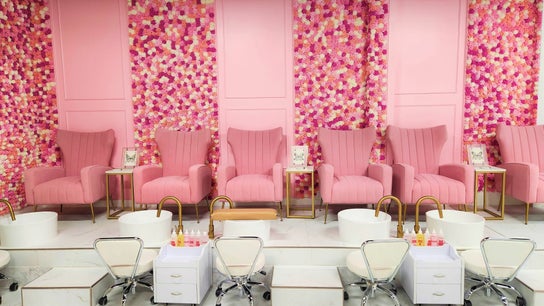
The physical salon space is crucial to attracting and retaining clients. It’s not just about aesthetics; it’s about functionality, comfort, and creating the right ambiance.
-
Strategic Location Selection: Location is paramount for a service-based business like a nail salon. Consider:
- Visibility and Accessibility: Choose a location with high foot traffic, good visibility from the street, and easy accessibility (parking, public transportation). Corner locations or spaces in busy plazas are often ideal.
- Demographics and Target Market Alignment: Ensure the location aligns with your target clientele. A salon targeting luxury clients might thrive in an upscale shopping district, while a salon catering to students might be successful near a university.
- Competition Proximity: Analyze the proximity of competitors. While some competition can be healthy, over-saturation can make it challenging to attract clients.
- Rent and Lease Terms: Negotiate favorable lease terms, considering rent costs, lease duration, leasehold improvements, and renewal options. Understand all lease clauses carefully.
- Zoning and Permits: Verify that the location is properly zoned for a nail salon and that you can obtain all necessary permits and licenses for operation in that specific location.
-
Salon Design and Ambiance: Create a space that reflects your brand and appeals to your target clientele.
- Layout and Functionality: Design a layout that is efficient for workflow, comfortable for clients and technicians, and maximizes space utilization. Consider reception area, manicure stations, pedicure stations, waiting area, sterilization area, restroom, and storage.
- Aesthetics and Décor: Choose a décor style that aligns with your brand and creates the desired ambiance – modern minimalist, luxurious spa, chic boutique, etc. Consider color palettes, lighting, furniture style, décor elements, and overall atmosphere. Create a relaxing and inviting environment.
- Comfort and Ergonomics: Invest in comfortable and ergonomic furniture for both clients and technicians. Client chairs should be comfortable for extended periods, and technician stations should be ergonomically designed to prevent strain and fatigue.
- Ventilation and Safety: Proper ventilation is crucial in a nail salon to remove fumes and dust. Invest in a high-quality ventilation system. Ensure the salon meets all safety and hygiene regulations.

-
Equipment and Furniture Procurement: Source quality equipment and furniture that is both functional and aesthetically pleasing.
- Manicure and Pedicure Stations: Invest in professional-grade manicure tables, pedicure chairs (consider plumbed-in vs. portable), technician chairs, and client chairs. Balance cost with quality and durability.
- Sterilization Equipment: Autoclave (steam sterilizer) is essential for sterilizing metal implements. UV sanitizers can be used for other tools but are not a substitute for autoclaving. Ensure you have adequate sterilization capacity for your service volume.
- Furniture and Décor: Reception desk, waiting area seating, storage cabinets, shelving, décor elements, and lighting fixtures. Source furniture that is both stylish and durable.
- Point-of-Sale (POS) System: Invest in a reliable POS system for appointment scheduling, payment processing, inventory management, client database, and reporting.
Phase 3: Building Your Team – Hiring and Training Staff
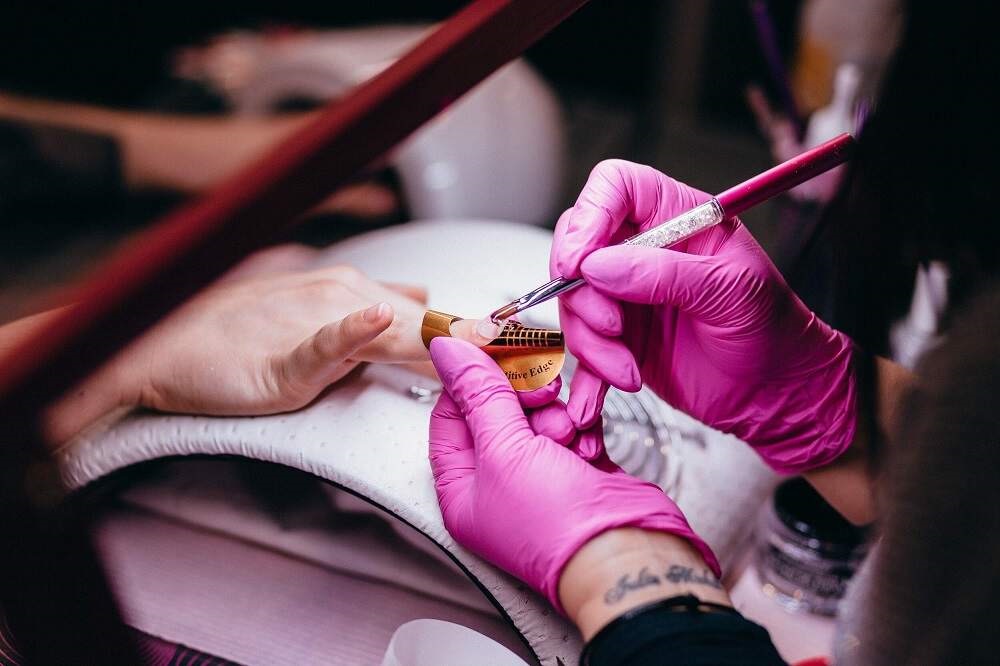
Your staff is the face of your salon. Hiring skilled, friendly, and professional technicians is crucial for delivering excellent service and building client loyalty.
-
Recruitment and Hiring: Finding qualified technicians is essential.
- Job Descriptions: Create clear and detailed job descriptions outlining responsibilities, required skills, experience, and compensation.
- Recruitment Channels: Advertise through online job boards, industry-specific websites, social media, and local beauty schools. Consider referrals from your network.
- Interview Process: Conduct thorough interviews, assessing technical skills (practical nail tests), customer service abilities, professionalism, and team fit.
- Background Checks and License Verification: Verify licenses and conduct background checks to ensure you are hiring qualified and reputable technicians.
-
Training and Onboarding: Invest in comprehensive training to ensure consistent service quality and adherence to your salon standards.
- Technical Skills Training: Provide training on your salon’s specific techniques, product lines, and service protocols. Ensure consistency in service delivery.
- Customer Service Training: Emphasize customer service skills, communication, professionalism, and handling client requests and complaints.
- Product Knowledge Training: Train staff on product knowledge, ingredients, application techniques, and retail sales.
- Hygiene and Safety Protocols: Rigorous training on hygiene and sterilization procedures is paramount for client safety and salon reputation.
- Ongoing Training: Implement ongoing training to keep staff updated on new trends, techniques, and products.
-
Compensation and Employee Management: Attracting and retaining good staff requires fair compensation and positive employee management.
- Competitive Wages and Commission Structures: Research industry-standard wages and commission structures in your area. Offer competitive compensation to attract and retain talent.
- Benefits and Incentives: Consider offering benefits like health insurance, paid time off, bonuses, and retail commission incentives to attract and motivate staff.
- Positive Work Environment: Foster a positive and supportive work environment. Encourage teamwork, open communication, and professional development.
- Performance Reviews and Feedback: Implement regular performance reviews and provide constructive feedback to staff. Recognize and reward good performance.
Phase 4: Spreading the Word – Marketing and Grand Opening

Related articles 02:
1. https://recipebox.vn/top-trending-nail-designs-a-guide-to-chic-and-eye-catching-styles/
4. https://recipebox.vn/nails-and-fashion-the-ultimate-accessory-for-self-expression/
Marketing is essential for attracting clients to your new salon. A well-executed marketing plan, especially leading up to your grand opening, can create initial buzz and build momentum.
-
Pre-Launch Marketing: Start marketing efforts well before your salon opens.
- Social Media Presence: Create social media profiles (Instagram, Facebook, TikTok) and start building your online presence. Share behind-the-scenes glimpses of salon renovations, introduce your team, and showcase your services.
- Website and Online Booking: Launch a professional website with service menus, pricing, location details, and online booking capabilities.
- Local Partnerships: Partner with local businesses (hair salons, spas, boutiques) for cross-promotions and referrals.
- Public Relations (PR): Reach out to local media (newspapers, magazines, bloggers) to announce your salon opening and highlight your unique offerings.
- Grand Opening Event Planning: Plan a grand opening event to generate initial excitement and attract clients.
-
Grand Opening Strategy: Make your grand opening memorable and impactful.
- Grand Opening Promotions: Offer special discounts, grand opening packages, or free services to attract initial clients.
- Event Activities: Host activities like mini-manicures, raffles, refreshments, music, or demonstrations to create a festive atmosphere.
- Invite Local Influencers and Media: Invite local beauty bloggers, influencers, and media representatives to your grand opening event to generate social media coverage and press.
- Collect Client Information: Use the grand opening event to collect client contact information for future marketing efforts (email list, loyalty program sign-ups).
-
Ongoing Marketing and Client Retention: Marketing is an ongoing effort, not just a one-time event.
- Social Media Marketing: Maintain an active and engaging social media presence. Post high-quality photos of nail art, client testimonials, promotions, and salon updates. Run targeted social media ads.
- Email Marketing: Build an email list and send regular newsletters with promotions, new services, seasonal offers, and appointment reminders.
- Loyalty Programs: Implement a loyalty program to reward repeat clients and encourage client retention (e.g., points-based system, referral bonuses).
- Online Reviews and Reputation Management: Encourage satisfied clients to leave online reviews (Google, Yelp, etc.). Actively manage your online reputation and respond to reviews (both positive and negative) professionally.
- Local Advertising: Consider local advertising options like flyers, brochures, local magazines, community events, and partnerships with nearby businesses.
Phase 5: Thriving in the Long Run – Operations and Growth

Opening is just the beginning. Long-term success requires efficient operations, excellent customer service, and continuous adaptation to the evolving beauty industry.
-
Efficient Salon Operations: Streamline your daily operations for efficiency and profitability.
- Appointment Scheduling and Management: Utilize your POS system effectively for efficient appointment scheduling, reminders, and staff scheduling. Minimize no-shows and optimize technician utilization.
- Inventory Management: Implement a robust inventory management system to track product usage, manage stock levels, and minimize waste. Negotiate favorable supplier terms.
- Hygiene and Sanitation Protocols: Maintain impeccable hygiene and sanitation standards at all times. Adhere to all regulations and best practices. This is paramount for client safety and salon reputation.
- Customer Relationship Management (CRM): Utilize your POS system to track client preferences, service history, and build client relationships. Personalize client interactions.
- Financial Tracking and Analysis: Regularly monitor your financial performance (revenue, expenses, profit margins) to identify areas for improvement and make data-driven decisions.
-
Exceptional Customer Service: Customer service is the cornerstone of a successful salon.
- Friendly and Welcoming Atmosphere: Create a warm and inviting salon atmosphere where clients feel comfortable and pampered.
- Professional and Skilled Technicians: Ensure your technicians are not only technically skilled but also friendly, professional, and attentive to client needs.
- Personalized Service: Train staff to personalize service based on client preferences and build rapport with clients.
- Handling Complaints Professionally: Develop a clear protocol for handling client complaints and concerns professionally and efficiently. Turn complaints into opportunities to improve customer service.
- Client Feedback and Continuous Improvement: Actively solicit client feedback (surveys, feedback forms, online reviews) and use it to continuously improve your services and operations.
-
Adaptability and Innovation: The beauty industry is constantly evolving. Stay ahead of trends and adapt to changing client preferences.
- Staying Updated on Trends: Continuously research new nail trends, techniques, products, and technologies. Attend industry trade shows and workshops.
- Introducing New Services: Regularly introduce new services and treatments to keep your menu fresh and exciting. Respond to client demand and industry trends.
- Product Innovation: Stay informed about new and innovative nail products (polishes, gels, acrylics, nail art supplies). Offer high-quality and trending products.
- Marketing Innovation: Adapt your marketing strategies to utilize new social media platforms and online marketing techniques. Stay creative and innovative in your marketing efforts.
Conclusion: A Rewarding Journey of Passion and Perseverance
Opening a nail salon is a demanding yet incredibly rewarding journey. It requires meticulous planning, hard work, financial investment, and a genuine passion for the beauty industry and client satisfaction. By learning from the experiences of those who have successfully navigated this path, focusing on thorough preparation, building a strong team, delivering exceptional service, and continuously adapting to the market, you can significantly increase your chances of creating a thriving and fulfilling nail salon business that not only achieves financial success but also brings joy and confidence to your clients. The journey may be challenging, but the rewards of building a beautiful and successful salon are well worth the effort.
